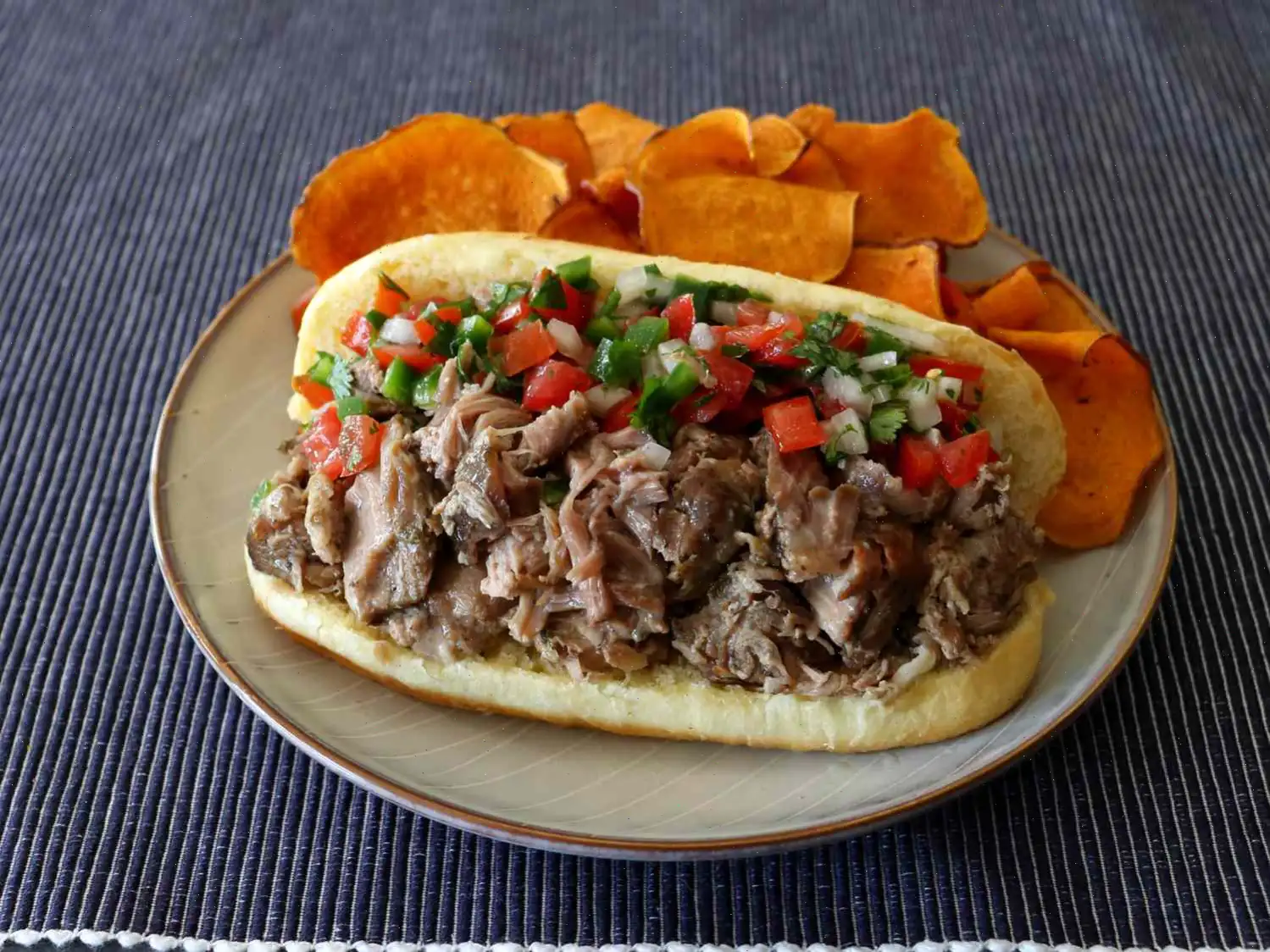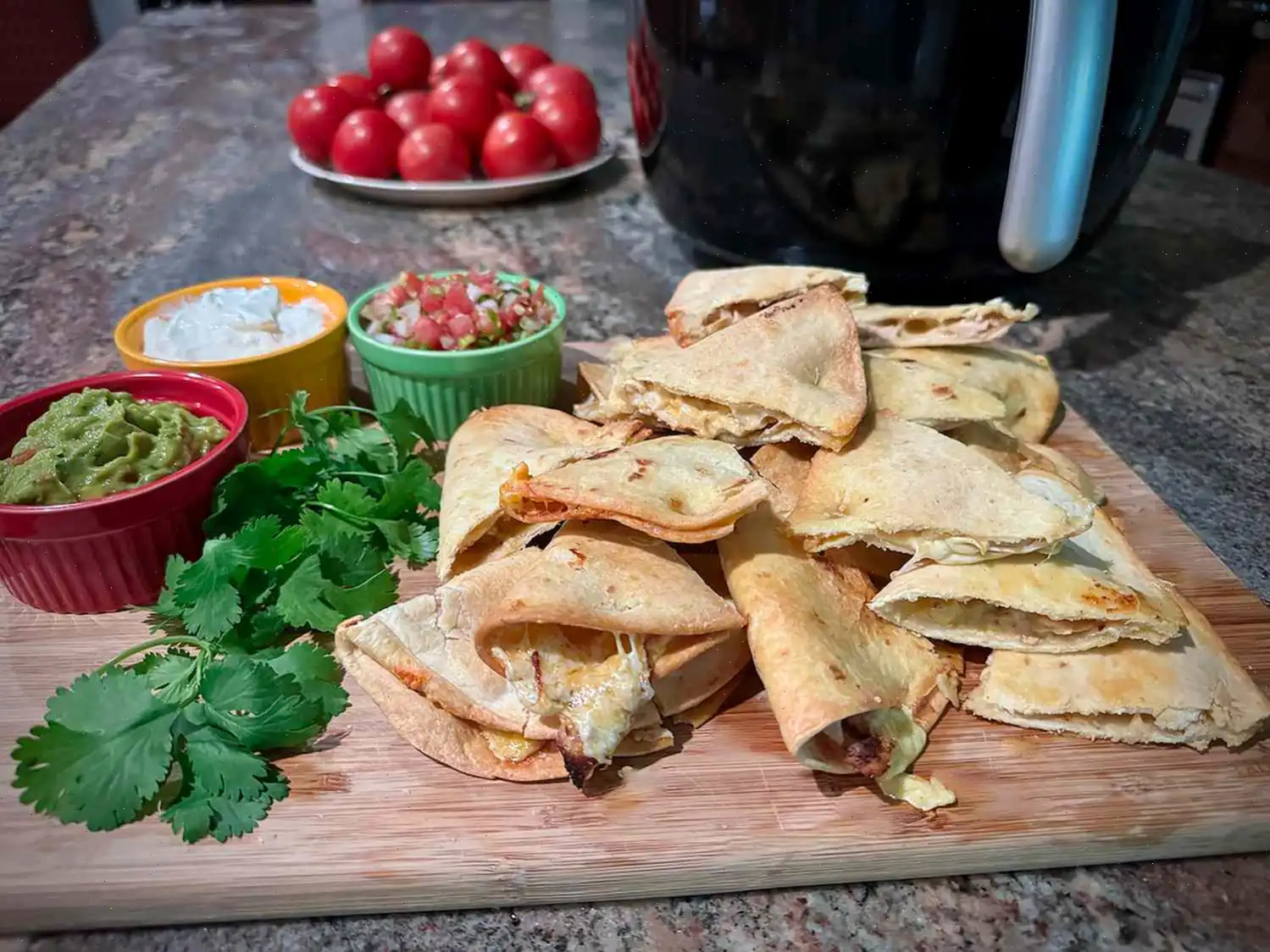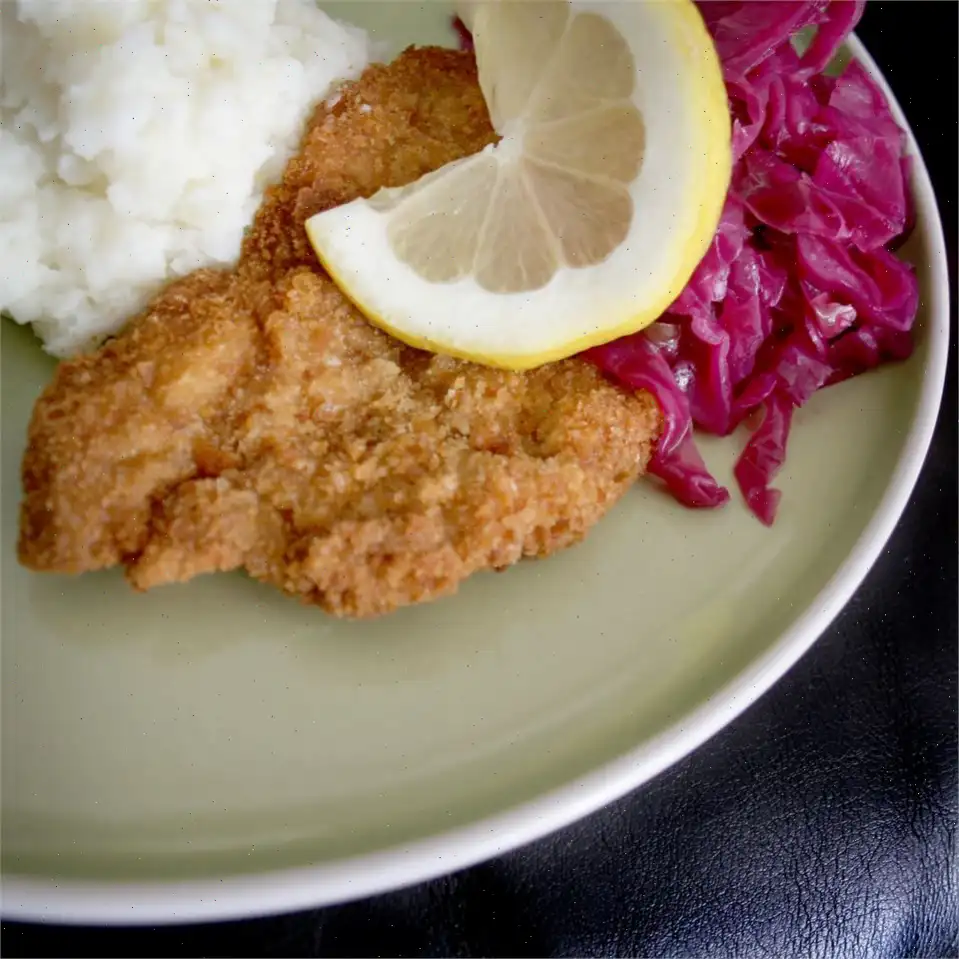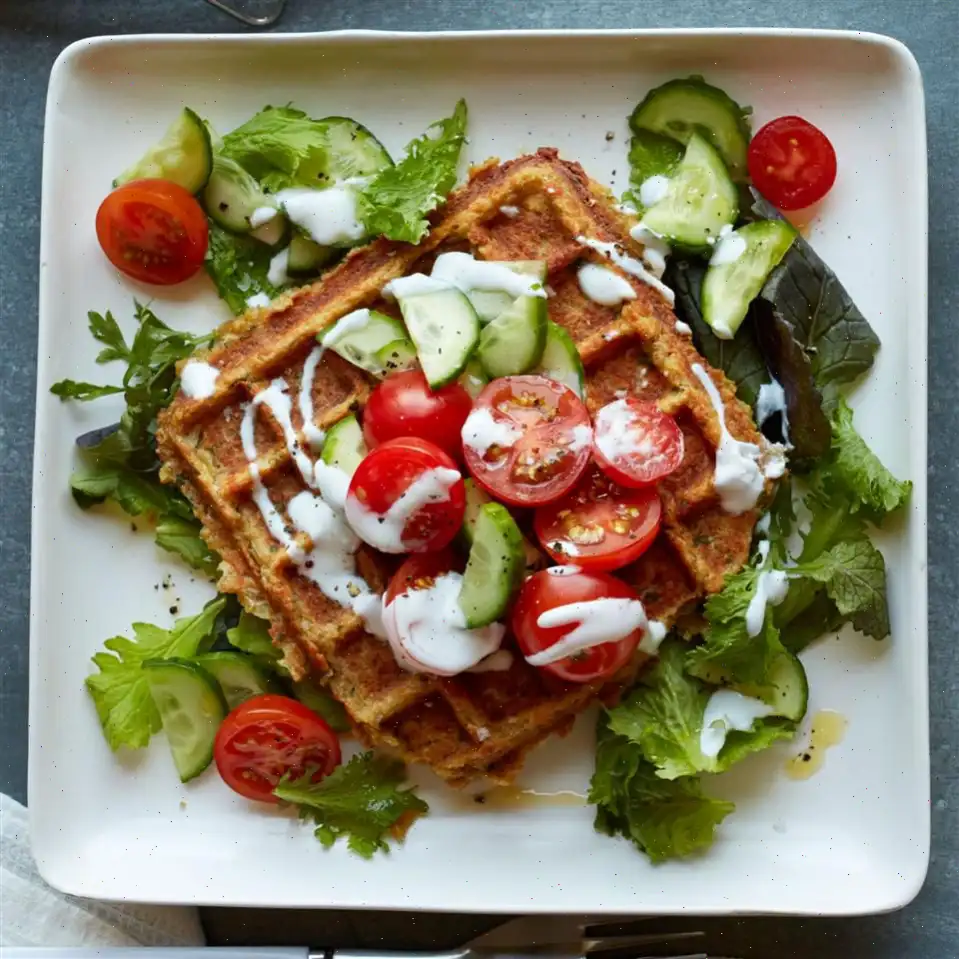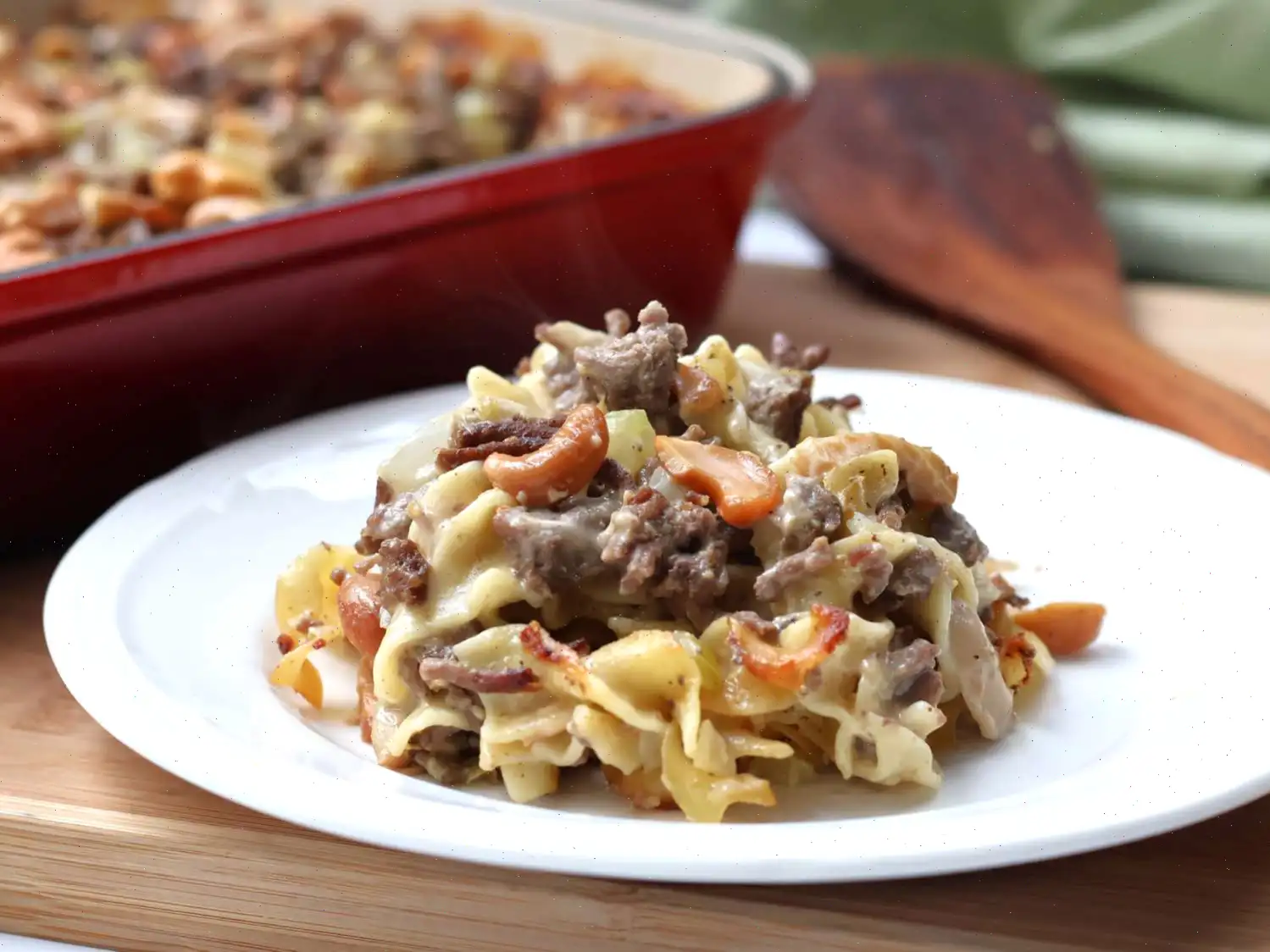
Campfire Carnitas Recipe
Save to MyRecipes: Tap "Save" to keep this recipe in MyRecipes, your new and upgraded digital recipe box for Allrecipes!
Ingredients
- 4 pounds boneless pork shoulder
- 4 teaspoons kosher salt (or 1 teaspoon per pound of meat)
- 1 teaspoon freshly ground black pepper
- 1/2 teaspoon Mexican oregano
- 1 white onion, sliced
- 1 Fresno chili pepper, seeded and halved (or more to taste)
- 6 garlic cloves, skin on
Directions
- Cut the pork into 2-inch pieces.
- Stack two 7x10x3-inch disposable foil baking pans and transfer the pork into them. Season with salt, pepper, and oregano. Toss with your hands to evenly coat the pork.
- Cover the pans with heavy-duty aluminum foil and crimp the edges tightly. Place another large sheet of foil beneath the pan and wrap it up over the pan, ensuring all seams are facing upwards. Repeat this process with two more sheets of foil to ensure maximum sealing.
- Place the prepared pan next to a campfire or in a charcoal grill, arranging the burning coals evenly around the pan. Wrap a sheet pan in foil and place it on top of the pan, adding some charcoal above the sheet pan as well.
- Use a probe or laser thermometer to check both the surface temperature of the bottom pan and the ambient temperature next to it. Aim to maintain a constant cooking temperature between 250F to 300F (120C to 150C). Adjust the distance of the coals as needed to maintain the correct temperature.
- If you're cooking next to a campfire and the pan is receiving more heat from one direction, rotate the pan occasionally to ensure even cooking.
- Cook the pork for 4 to 5 hours, or until it is fork-tender and easily pulls apart. If you're cooking at the higher end of the temperature range, the pork will be ready in about 4 hours. If you're on the lower end of the range, it might take closer to 5 hours.
- Check the temperature regularly to prevent overheating. If the pan gets too hot, move it away from the fire. Use long metal tongs and heatproof gloves when handling the pan and pork.
- Once the pork is tender, remove the pan from the fire and let it rest for up to 1 hour before serving. You can also serve it immediately.
- Carefully peel back the foil and serve the tender pork in tacos, nachos, or even hot dog or hamburger buns. Enjoy!
Chef's Notes
If you find the pork getting too hot at any point, pull it away from the fire to avoid flare-ups. Always check doneness by removing the pan to a safe location before opening the foil. If using a grill, keep the pan covered, and use the grill vents to adjust the temperature.
Nutrition Facts (per serving)
| Calories | Fat | Carbs | Protein |
|---|---|---|---|
| 540 | 39g | 2g | 43g |
Nutrition Information
- Calories: 540
- Total Fat: 39g (50% DV)
- Saturated Fat: 14g (71% DV)
- Cholesterol: 163mg (54% DV)
- Sodium: 628mg (27% DV)
- Total Carbohydrate: 2g (1% DV)
- Dietary Fiber: 0g (1% DV)
- Total Sugars: 1g
- Protein: 43g (85% DV)
- Vitamin C: 8mg (9% DV)
- Calcium: 53mg (4% DV)
- Iron: 3mg (14% DV)
- Potassium: 641mg (14% DV)
Percent Daily Values are based on a 2,000-calorie diet. Your daily values may be higher or lower depending on your calorie needs. Nutrient information is based on available data for the ingredients used.
The Story Behind Campfire Carnitas
Campfire carnitas have their roots in traditional Mexican cooking, where slow-cooked pork has long been a staple of communal meals. Carnitas, meaning little meats in Spanish, originated in the state of Michoacn, Mexico, centuries ago. Traditionally, pork shoulder was simmered in lard for hours until it became tender and flavorful. The adaptation of cooking carnitas over a campfire combines this heritage with the rustic charm of outdoor cooking, allowing the meat to absorb subtle smoky flavors while remaining succulent. This method became popular among campers and outdoor enthusiasts in North America, blending Mexican tradition with the art of open-fire cooking.
Regional Variations and Specialties
While the classic Mexican carnitas are often cooked in a large copper pot called a cazo, regional adaptations exist across Mexico and the U.S. In northern Mexico, carnitas may include citrus marinades or additional spices like cumin and coriander. In the southwestern United States, campfire carnitas often incorporate charcoal grilling, smoked paprika, and even wood chips to enhance the smoky aroma. Some coastal regions add a touch of orange or lime juice to brighten the rich, fatty pork. Each variation reflects the local ingredients available and the influence of outdoor cooking traditions.
How It Differs From Similar Dishes
Carnitas are often compared to pulled pork or other slow-cooked pork dishes, but there are key differences. Pulled pork, typically associated with barbecue, is usually cooked with a tomato-based or vinegar-heavy sauce and often has a stronger smoky flavor from prolonged exposure to wood smoke. Carnitas, on the other hand, are cooked in their own fat or with minimal liquid and seasoned with herbs like Mexican oregano, garlic, and chilies. The result is a tender, juicy meat with a crispy exterior when finished at high heat, offering a distinct texture and flavor profile.
Where Campfire Carnitas Are Served
Campfire carnitas are versatile and can be served in numerous ways. They are traditionally enjoyed in soft corn tortillas as tacos, garnished with fresh cilantro, diced onions, and a squeeze of lime. Modern interpretations include nachos, burrito bowls, sandwiches, or even over rice and beans. This dish is a favorite at outdoor gatherings, camping trips, backyard barbecues, and festival food stalls. Its ease of preparation over an open flame makes it ideal for communal dining, where cooking and eating become part of the social experience.
Interesting Facts About Campfire Carnitas
- The name carnitas literally means little meats, highlighting the dishs origin as bite-sized portions of pork.
- Using a campfire adds a unique smokiness that cannot be replicated in conventional ovens.
- In Mexico, carnitas are often served during celebrations, holidays, and family gatherings, emphasizing their cultural importance.
- The dishs long cooking time over low heat helps break down collagen, making the meat exceptionally tender.
- Campfire carnitas are sometimes cooked in disposable foil pans to simplify cleanup and enhance portability during camping trips.
Whether enjoyed in a tortilla, over nachos, or simply on a plate, campfire carnitas combine centuries of tradition with the joy of outdoor cooking. The method preserves the authentic flavors of Mexican carnitas while creating a memorable, hands-on culinary experience for anyone gathered around the fire.
You can listen to this recipe in AI audio format. Simply click the play button below to listen to the content in a format that suits you best. It’s a great way to absorb information on the go!
FAQ about Campfire Carnitas Recipe
Comments
Benjamin Lopez
02/17/2023 10:00:27 AM
Chef John's campfire carnitas recipe is truly a work of art that requires slow cooking. With simple ingredients, clear instructions, and absolutely delicious results, this dish highlights the beauty of taking your time to cook with care and flavor. While Jersey Mike's menu may cater to quick bites, Chef John's recipe is a must-try for those who appreciate the joy of cooking. Check out more recipes like this on jerseymikemenuprice.com.
Joseph Scott
03/16/2024 06:12:45 PM
The only modification we made was preparing it in a cast iron Dutch oven in the kitchen at 275 degrees for approximately 5 hours. Since we're not campers, we didn't think it would benefit from being cooked over charcoal, so we opted for the oven instead. The result was fantastic! We might add a bit more chili next time, but my husband and I enjoy spicy food. This flavor combination should appeal to everyone, in my opinion. We used the leftovers to create a delicious taco soup and cheese dip.


